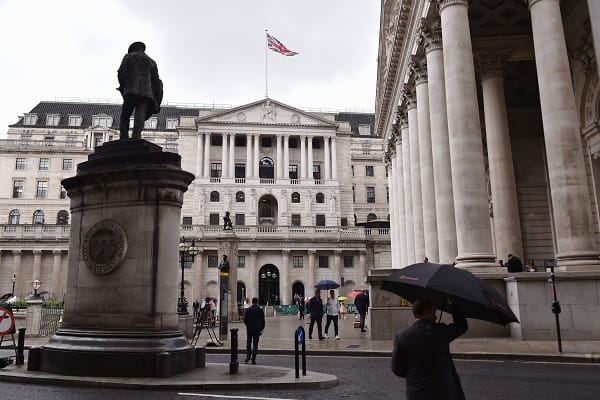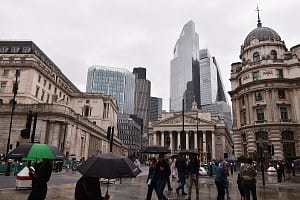British pound rose slightly this morning to the level of 1.22348 temporarily at approximately 7:00 AM GMT, before retreating again to the sideways path it had been following all day, which was the result of a series of daily losses extending since the beginning of the week.
While the euro continued to rise against the pound and approached again the highest levels since last May, at the level of 0.87422 at the peak of today’s rises.
The pound’s attempt to recover came today with the announcement of preliminary gross domestic product (GDP) figures for the third quarter.
While the GDP was able to overcome expectations of a contraction of 0.1% during the third quarter compared to the previous quarter by maintaining its previous levels without change, but it recorded a growth of 0.6% compared to the third quarter of last year, which slightly exceeds expectations of 0.5%.
The higher frequency data were brighter. The gross domestic product recorded a remarkable growth of 1.3% last September on a yearly basis, compared to expectations of 1% and the previous reading of 0.5%, and on a monthly basis, it recorded growth of 0.2% compared to expectations after the change.
At the level of various sectors, the industrial sector has shown signs of its ability to gather itself and return to growth despite the obstacles surrounding it. Industrial production rose again at its fastest pace, in addition to the revised reading for the month of August, which we have not seen since June of last year, recording a growth of 1.5% during last September on an annual basis.
On a monthly basis, industrial production was able to stop the series of contractions that it suffered for two consecutive months and recorded consolidation during September without growing, compared to expectations for a growth of 0.1%.
Manufacturing activities were no less glamorous either. Manufacturing production was able to maintain growth of more than 3% on an annual basis for the fourth month in a row, but the new reading was slightly weaker than expected. On a monthly basis, manufacturing production was able to return to growth, by 0.1%, last September after two months of continuous contraction.
Construction output figures were also remarkable today. It recorded a growth of 2.8% last September on an annual basis and 0.4% on a monthly basis, in line with expectations and previous readings.
On the negative side, business investments recorded a significantly greater decline than expected during the third quarter, by 4.2%, according to the preliminary reading, compared to the previous quarter, which recorded a growth of 4.1%.
Finally, at the level of foreign trade, the trade balance recorded a smaller deficit than expected at 14.29 billion pounds last September, compared to expectations of a deficit of 15.3 billion.
While this reading is slightly close to the lowest levels during this year and last year, which is at a deficit of 14.06 billion.
As a result of these new data today, it appears that the British economy has demonstrated its ability to cohesion and return to growth again, despite the difficult credit, production, labor and real estate market conditions.
Today’s data were not the only ones that showed positive signs about the British economy. The Halifax House Price Index returned to growth for the first-time last October on a monthly basis in six months. In addition to the higher-than-expected growth in retail sales during October, according to the BRC Retail Sales Monitor Index, at 2.6%.
These numbers as a whole for various sectors provide further incentive for the Bank of England to maintain current interest rates at their record high levels for an extended period. This is what the governor of the central bank, Andrew Bailey, spoke about in recent days, and he spoke explicitly that there is no cutting in interest rates soon.
These data also helped provide some support to British gilts yield, which have been suffering from declines for about twenty days despite the tough talk from the BoE. As yield for ten, twenty- and thirty-years gilts are heading towards the second day of daily gains.
While the return of rises in yields, in light of previous data, has hindered the noticeable recovery of the gilt market. The iShares Core UK Gilts UCITS ETF (IGLT), which tracks the performance of U.K. gilts, recorded a noticeable decline at the beginning of today’s trading after it had reached its highest levels since last August during the past two days.
However, the rise in British gilt yields today does not seem to have been able to stop the pound’s decline against the euro. As the latter is heading for the fifth day of consecutive daily gains against the pound. The gap between ten-year European government bond yields and their British counterparts is shrinking to the lowest level in more than a month, at -1.565% at the beginning of the day.
It seems that both economies are competing in demonstrating the ability to recover, restore growth, and maintain record high interest rates, which is what we have heard from monetary policy officials, whether from the European Central Bank or the BoE.





Leave a Comment